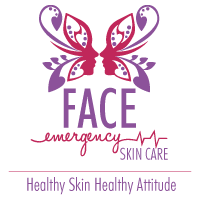Deep Pore Enzyme Exfoliation for Skin
Deep pore exfoliation is a recommended treatment for all skin types to make your skin smoother, brighter, and more hydrated. When it comes to skin peels, it’s important to understand the two commonly available options, AHA chemical exfoliation and enzyme exfoliation, in order to see which one best suits your needs. While both treatments offer the same benefit – removing the dead cells from your skin – the level of abrasiveness and effectiveness varies depending on the procedure.
A bit of skin background
Your skin is made up of three layers. The outermost is known as the epidermis, while the lower portion is the dermis and the deepest portion is the hypodermis. Both the epidermis and dermis are made up of many layers of tissue. As the epidermis is the outermost layer, it is constantly exposed to pollution, makeup, sweat, sun, and other daily factors. This can clog up your complexion and leave skin looking dull and cause breakouts.
Both layers work constantly to make new skin cell layers to replace older, dead skin cells present on the surface. This process usually takes between 28-48 days, depending on your age (the process naturally slows down as you get older) and the type of skin you have. An exfoliation is thus used to speed up this process. Exfoliation refers to a procedure that removes dead skin to reveal brighter and softer skin, which includes facial peels.
What is a deep pore enzyme exfoliation?
An enzyme exfoliation or peel is activated by water, and instantly breaks down the dead skin cells, improving your skin’s texture, tone, and elasticity in a process known as cellular renewal. It does not contain acids; therefore, your skin’s pH level is not unbalanced. The process speeds up skin cell replacement by accelerating the chemical reaction that is needed to bring forth newer cells and get rid of older ones. It exfoliates your skin at a much faster rate while using a much gentler process than a chemical exfoliation or peel, leaving your skin instantly brighter. An enzyme exfoliation can loosen and remove dead skin cells, promote younger cells, diminish scars, alleviate dryness, stretch marks, age spots, fine lines and discoloration, and reduces toxins.
An enzyme exfoliation is favored over other types of peels because it is safe for all skin types, is completely natural and doesn’t cause redness or any irritation. Because of the lack of chemicals, enzyme exfoliation offers a limited exfoliation just at the skin’s surface. Enzyme peels are usually made from a blend of natural ingredients like fruits and plant sources that are high in antioxidants such as papaya, pineapple, pomegranate and blueberries.
What is an AHA chemical exfoliation?
An AHA chemical exfoliation stands for alpha-hydroxy acids, and is an effective process that exfoliates dead skin cells, while also removing living cells. An AHA chemical peel attracts and holds moisture close to the skin’s surface, meaning that the preferred chemical exfoliator for those who suffer from dry skin. AHAs are minute molecules that penetrate the upper layer of skin and dissolve dead skin cells, whilst promoting cell regeneration. Chemical exfoliation can lead to heightened sun sensitivity and does not work on all skin types. They may leave you needing to hibernate for a while after the process, as skin usually turns red, and can lead to scabbing, because of the process of removing living cells. AHA chemical exfoliation is best for those with normal/sensitive skin, and is usually made from lactic and/or glycolic acids.
Where can I get this?
Both processes – an enzyme and an AHA chemical peel – should be administered by a certified skin specialist. Pay attention to your skin’s needs, and if any irritation occurs after the procedure, be sure to speak to your skin specialist. It depends on your skin, but generally you shouldn’t be using a chemical exfoliation more than once a month. Enzyme exfoliation can be used more regularly, but it is best to consult a skin care specialist to get the best advice for your skin.
